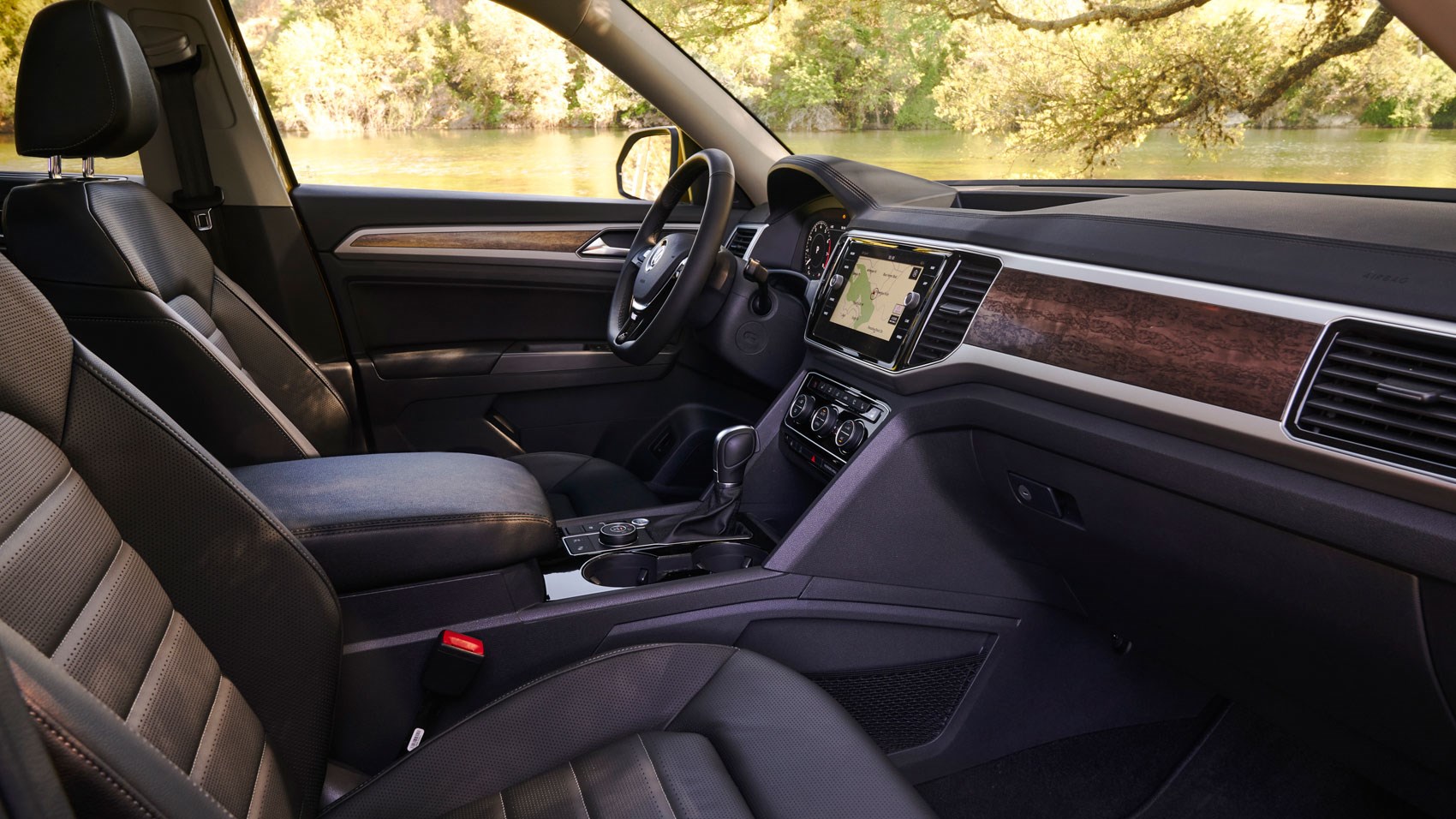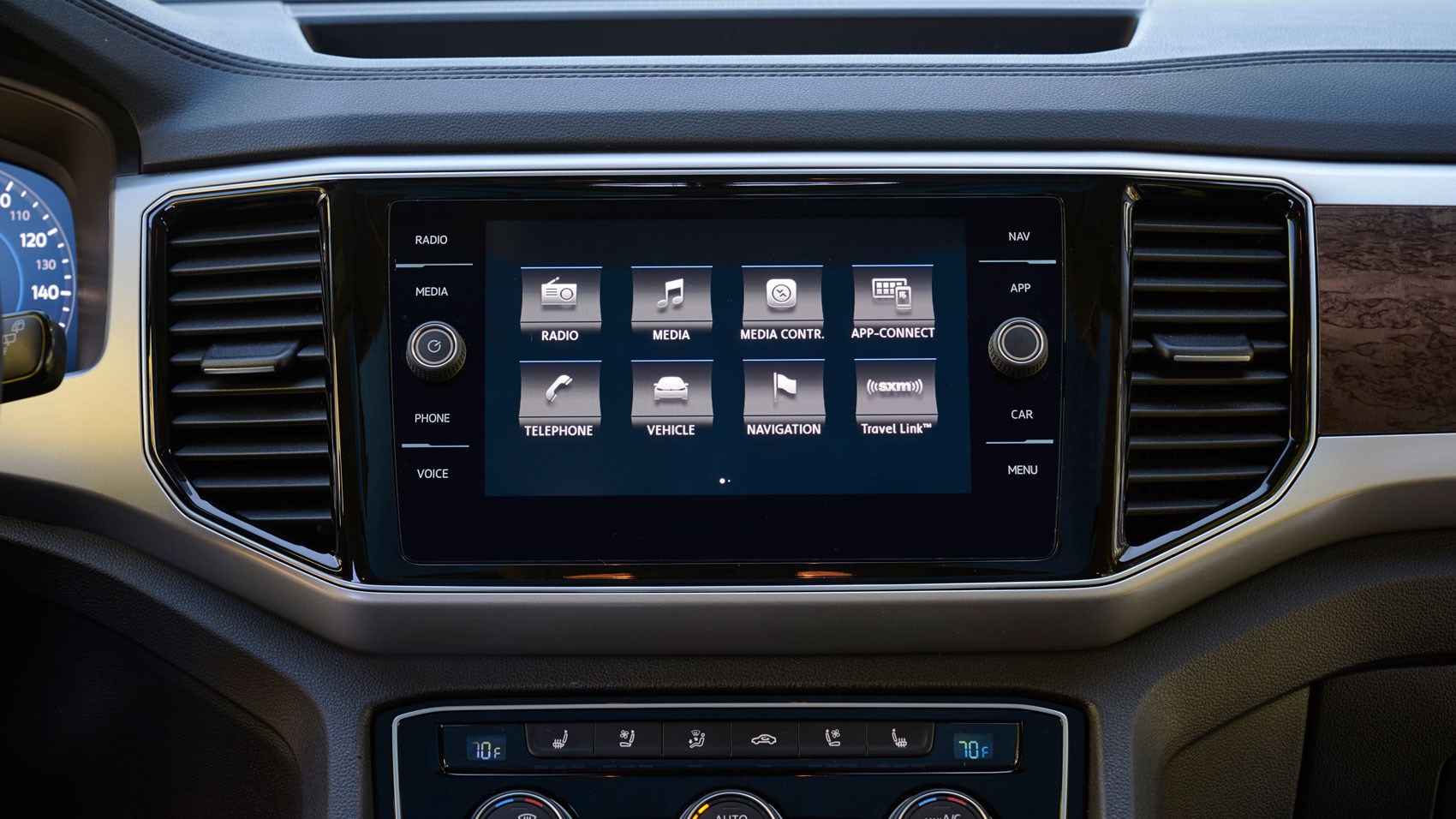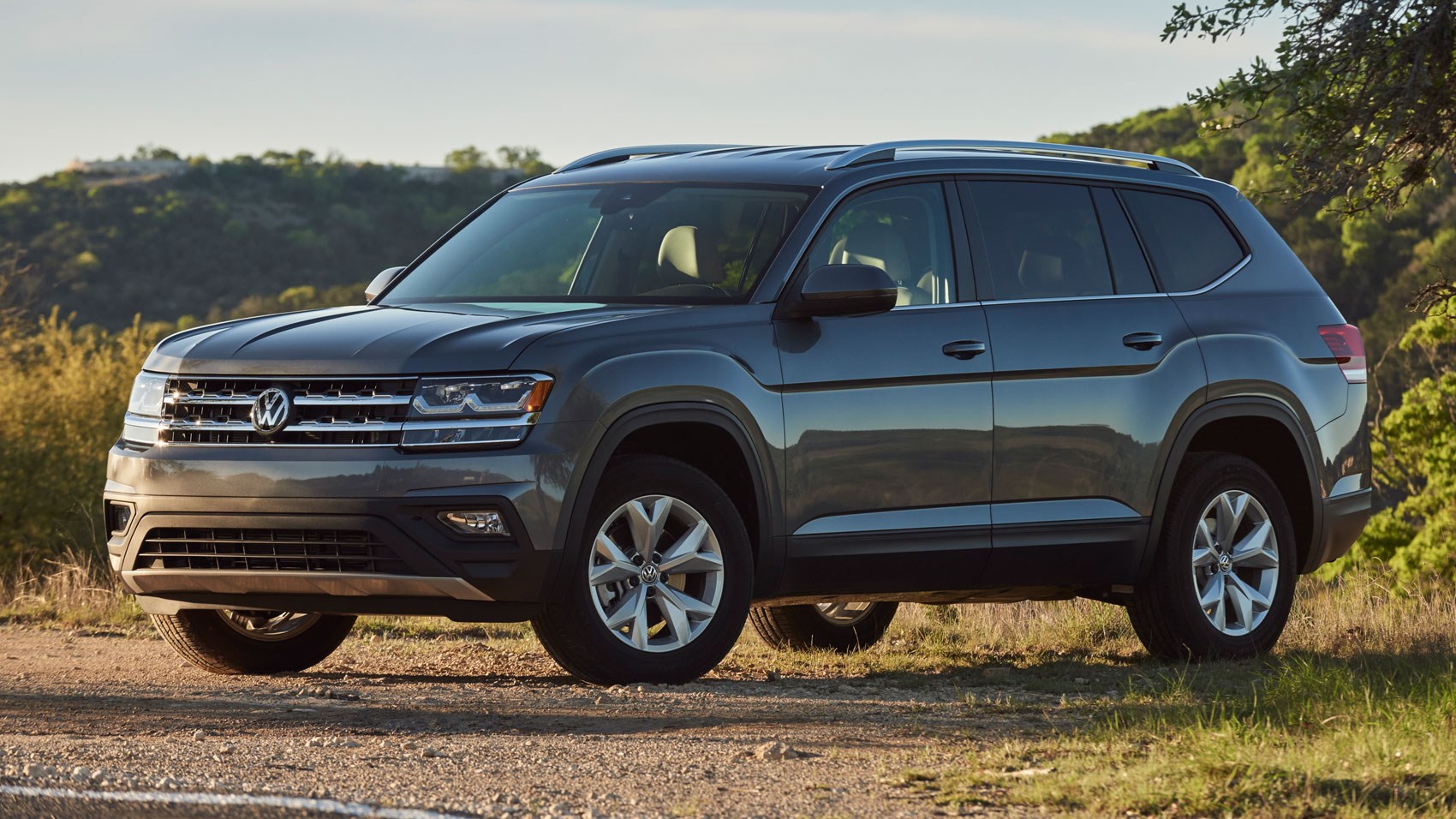► VW Atlas road test
► USA-spec 7-seat SUV
► Tested by Ben Barry
VW’s MQB architecture is more usually found underpinning compact products like the Golf. But MQB’s building blocks are designed to be flexible and applicable to all manner of cars, and here it is taking that to the extreme, lurking beneath the Volkswagen Atlas – a seven-seat SUV with transversely mounted engines and a choice of front- or four-wheel drive.
At 5036mm long, the Atlas is longer even than a Range Rover, never mind the VW Touareg SUV, and fuses recognisably European VW design signatures with a distinctly US flavour – note the square-jawed front, Jeep-like wheel arches, and the suggestive utilitarianism of the stampings in the bonnet and roof. This is not coincidental. Built at the Chattanooga plant in Tennessee and released earlier in 2017, the Atlas is not destined for the UK, rather aimed squarely at the North American market, plus Russia and the Middle East. A recent trip to the US provided the opportunity to drive it for the first time.
So the Atlas is pricier than a Touareg, then?
Actually, no. The Atlas gives Volkswagen a footing in the Honda Pilot, Ford Explorer, Toyota Highlander category that its European products can’t square up to, either in terms of size or pricing. This explains why the Atlas throws VW’s pricing structure out of whack: despite being a substantial 235mm and two seats larger than a Touareg (which uses a longitudinal engine layout and platform shared with the previous Porsche Cayenne), the Atlas starts from just $30,500, compared with $49,495 for the Touareg. At today’s exchange, that equates to around £23k, or a lot of metal for your money. Those rivals offer similar value.
To be viable in that market, clearly the Atlas has had to be built to a price, so there are areas where it falls short of the quality we’re accustomed to over here. We’ll come to that in a moment.

Buyers choose from either a 2.0-litre EA888 turbocharged engine with 235bhp and 258lb ft, or the 3.6-litre naturally aspirated V6. The latter was once found in the rarely spotted Passat R36, and makes 276bhp and 266lb ft. The 2.0-litre comes only with front-wheel drive, where V6 buyers choose from either front-wheel drive or the Haldex-type 4Motion all-wheel drive system, which adds 75kg and pushes the Atlas to 2042kg. No diesels are available, but all models get the eight-speed automatic transmission.
Four key trim levels are available: S, SE, SE with Tech package and SEL. Every model gets LED headlights, cruise control, 6.5-inch touchscreen, rear-view camera, voice control, Bluetooth and the Car-Net App-Connect system that includes Apple CarPlay.
We’re testing a front-wheel drive V6 in SE trim. At a whisker under $35k, it’s representative of the cars US buyers are actually driving off the lots.
What’s the Atlas like inside?
Huge. You step up to a raised driving position on comfortable chairs, with an elbow rest designed by people who possibly don’t know their arse from their elbow – skinnier types could actually sit on it. The row two seats slide and recline, and offer knee-room to rival a 747’s exit row. You can also seat an adult between two bulky child seats.
The third row folds up and down easily, and offers ample space for full-size adults – it helps to slide row two forward, but no-one ends up cramped. Even with row three in place, you’ve got a generous boot. Drop those extra seats down and it’s positively huge, and you can also drop row two completely flat.

But that cost-cutting we mentioned is also in evidence: even quite prominent dash plastics are hard, the trim inserts look a little flimsy, and leatherette is as good as it gets, with base S models getting cloth. It’s also surprisingly rough under the bonnet, with clumsy welds and holes punched in the front wings that look short of a nut and bolt. It’s all a bit DIY in appearance.
Nonetheless, familiar, good quality switchgear is evident throughout the cabin, there’s a leather-wrapped steering wheel, and our SE gets a slick 8.0-inch touchscreen (using Apple CarPlay to get your sat-nav, not VW kit).
How does the Atlas drive?
Unspectacularly, but it’s good enough. The suspension – struts up front, multi-link rear – is fairly soft and doesn’t always smooth out the roughest bumps, but is comfortable in most circumstances. The steering is light, and tweaked to US tastes. There’s little response from the first few millimetres directly off-centre, and the self-centring effect is quite pronounced, but it succeeds in making the Atlas feel reasonably wieldy despite its mammoth proportions.
Having front-wheel drive rarely proved an issue, as odd as it seems in this segment. The main exception was pulling out of T-junctions, at which point the 18-inch all-season Continental tyres scrabble with surprisingly little provocation.

Europeans are used to big SUVs with turbodiesel torque, as well as new-generation turbocharged petrol engines with strong low-down torque. So combining a naturally aspirated petrol V6 with almost two tonnes of metal is understandably a little underwhelming. Just like the chassis, the result is acceptable performance in typical driving, but a less-than-dynamic feeling under heavy acceleration. It’s perhaps why the eight-speed auto kicks down so eagerly at light throttle loads and low speed.
Interesting to note that the four-cylinder engine makes just 8lb ft less than the V6, but delivers it from 1600rpm, compared with the V6’s 2750rpm. That it also weighs 52kg less gives the least powerful models a narrow 2lb ft-per-tonne victory compared with the front-drive V6, rising to 5lb ft over the all-wheel-drive range-topper.
Ultimately, the Atlas is far from a dynamic, agile machine, but it feels comfortable and unintimidating to drive, and perfectly at home on US city streets and the slower-paced driving of California highways. The generally impressive refinement of our test car was, however, spoilt a little by wind noise around the mirrors.
Verdict
The Atlas might be based on familiar MQB underpinnings, but it’s a very different kind of Volkswagen. The handling, performance and the sheer size of the thing might feel a little cumbersome back in the UK, but on US roads it actually works very well. Quality could be better, but the fact that it offers so much space and versatility for so little cash makes it a compelling alternative to big sellers like the Ford Explorer in the US market.